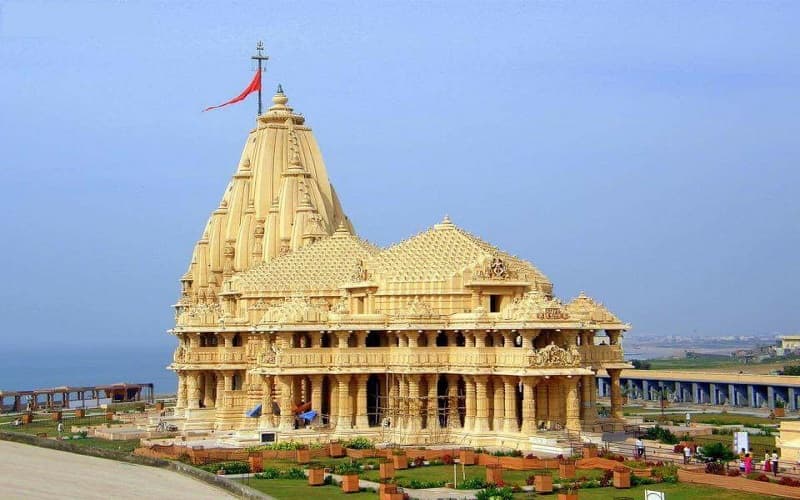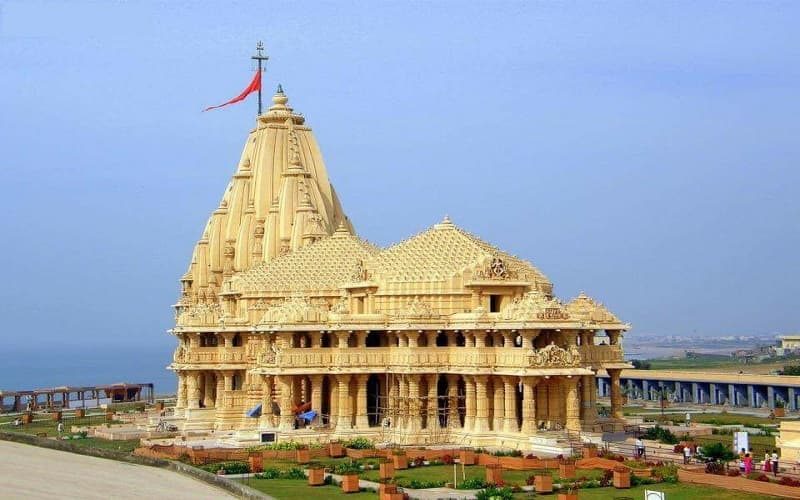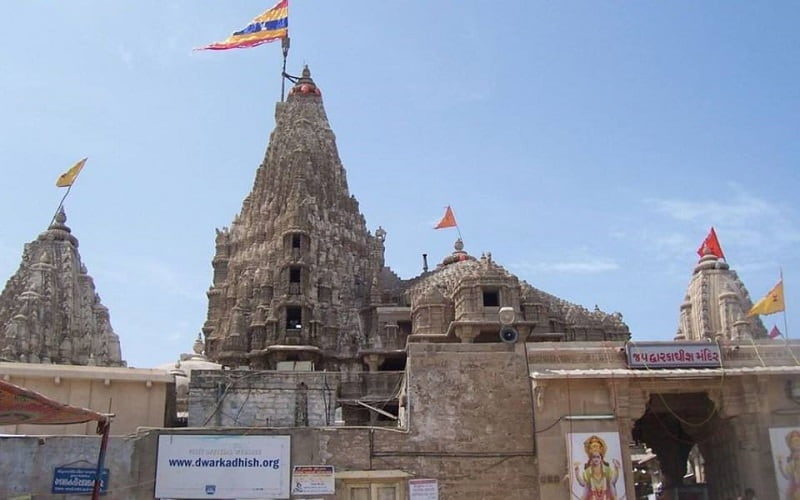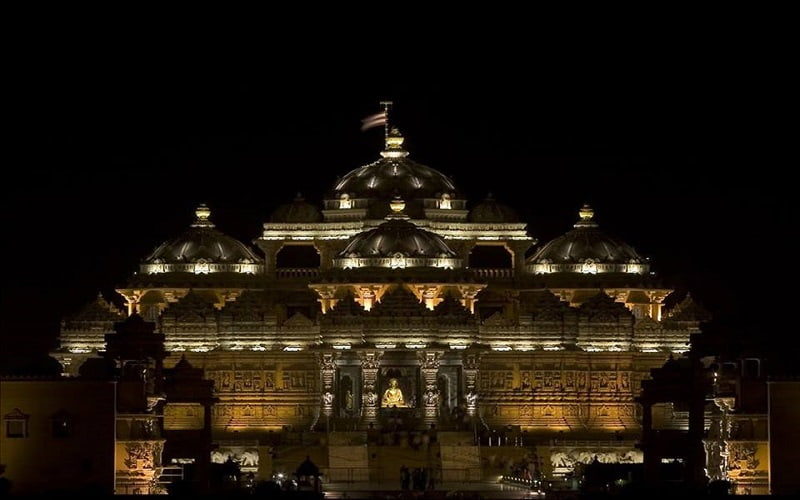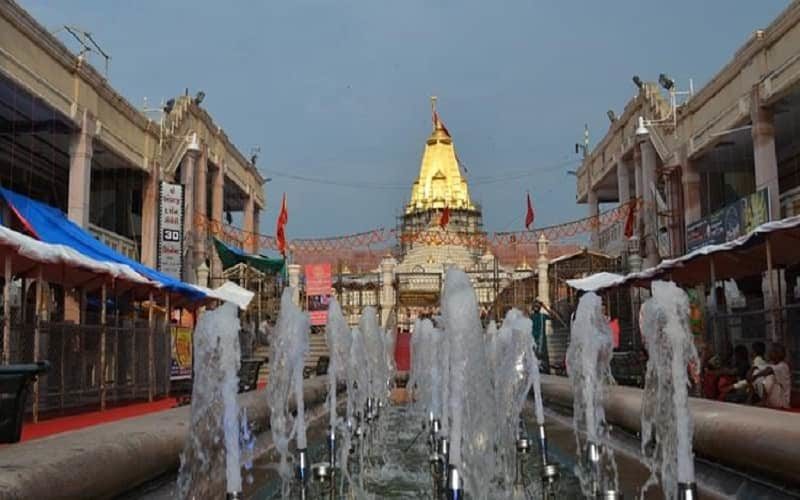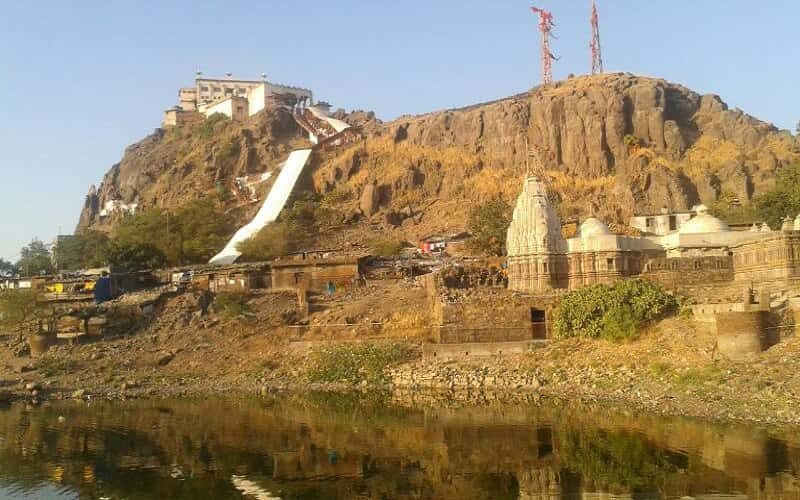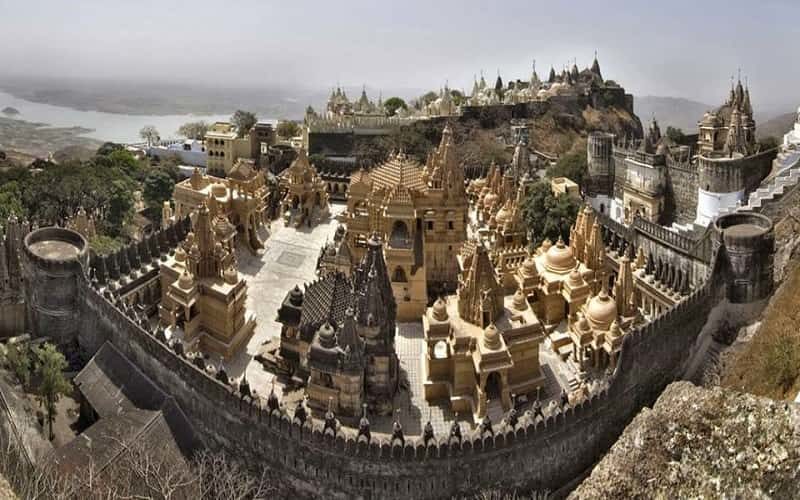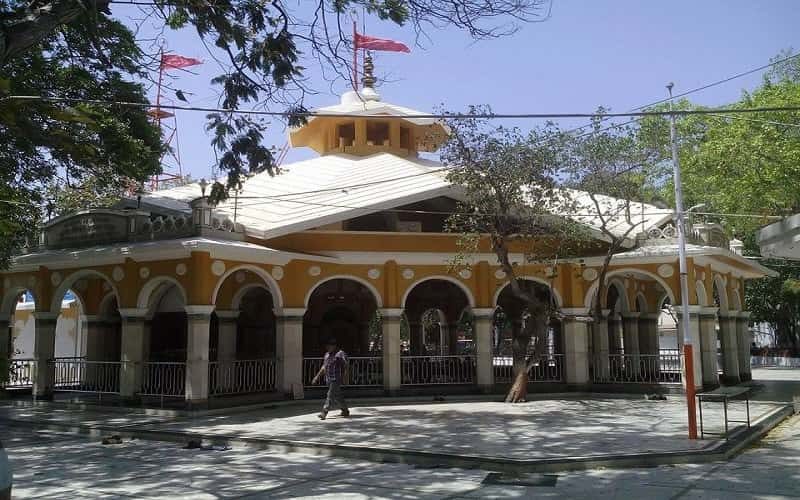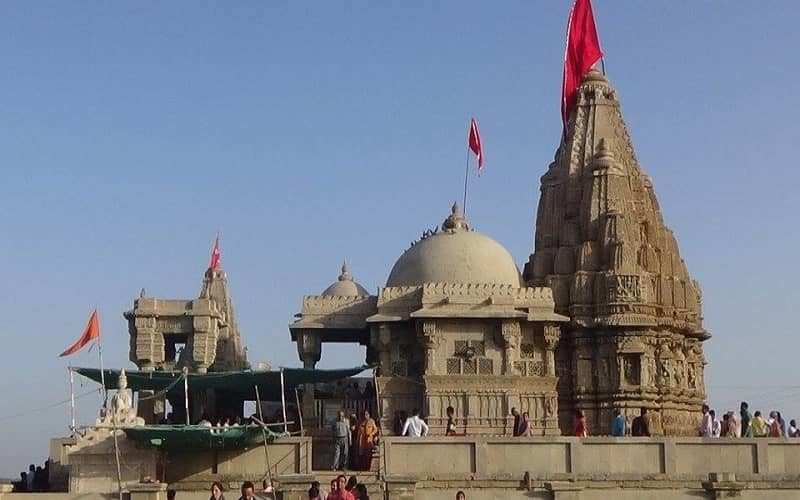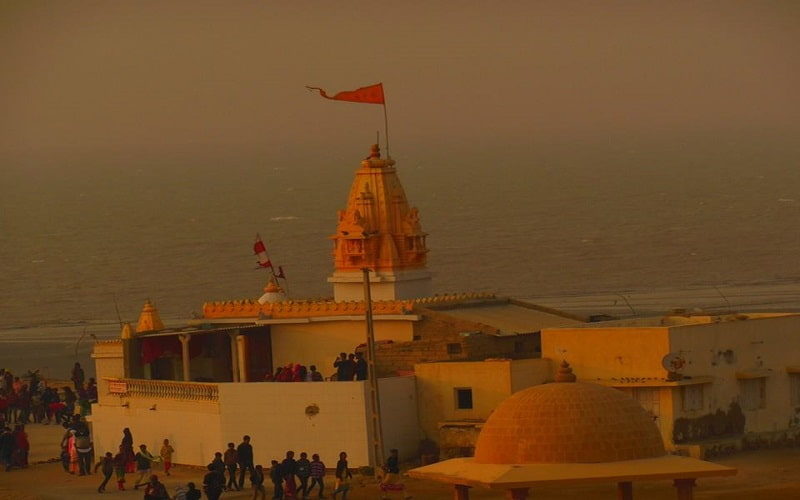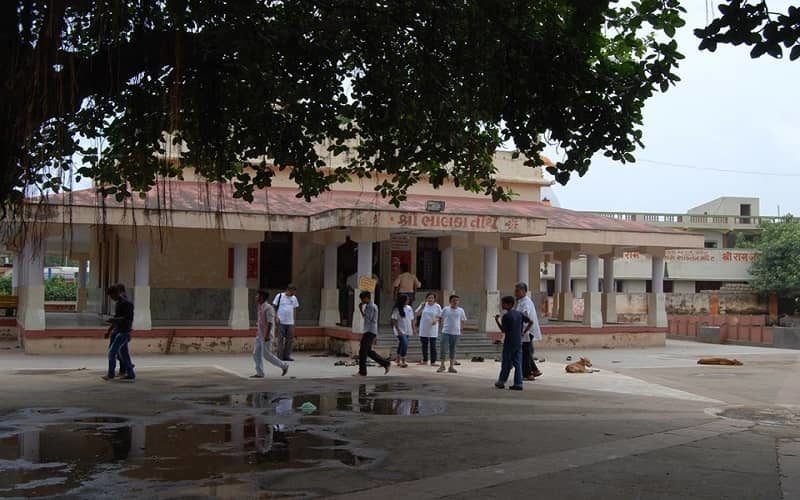No products in the cart.
Gujarat – the land of the white desert, of artisans who bloom a million colours in textiles cherished throughout India, of natural sanctuaries that house some of our most treasured wildlife species, of a million different reasons why travelers oughtn’t side-step its precious landscape is also sought after by the religiously and spiritually inclined for its many sacred shrines. Let us give you an inventory of the major temples you would find in any major Gujarat Tourism Guide, to serve as your guiding star in your next trip to this wild, western land of India.
- Somnath Temple, Prabhas Patan
Lord Shiva dwells in Somnath Temple as the ‘Lord of Soma’. Soma is another name of the beloved Moon God Chandra. Temple mythology cites that Soma was restored his lost luster after bathing in the sacred waters of River Saraswati. In fact, Somnath witnesses the merger of three rivers, the visible rivers of Kapila and Hiran and the invisible yet ubiquitously venerated Saraswati. It is believed that the rhythms of waxing and waning of moon started after this particular incident. Since Lord Shiva freed Soma from this curse at this very site, a temple was to build to commemorate the holy event. Thus the history of the temple is traced back to a time eons ago.
The first of the revered twelve jyotirlingas across India, Somnath Temple’s chalukya style architecture suitably complements the majesty and grandeur one would associate with Lord Shiva’s ‘Shrine Eternal’. Visit Somnath Temple located in Prabhas Patan of Saurashtra, western Gujarat.
- Dwarakadheesh Temple, Dwaraka
Dwaraka in Gujarat prides itself on having been the kingdom of Lord Krishna once. In fact, the city still contains remnants of this divine era in the form of its Jagat Mandir or Dwarakadheesh Temple. As the name suggests, the temple is dedicated to the Lord of Dwaraka. It is believed that the grandson of Krishna Shri Vajranabh built the temple as an exact replica of the temple that stood on the ground before the city was flooded in the ocean waters at the end of Treta Yuga. The architectural marvel of its main shrine is a picturesque 72 pillar supported monument which is over 2000-2200 years old.
Dwarakadheesh Temple is an integral part of Chardham yatra, a pilgrimage initiated by Adi Shankaracharya in the eighth century to four sacred shrines scattered in four cardinal directions of the Indian Peninsula, the rest of which are temples at Rameswaram, Puri and Badrinath. Devout believe that Krishna’s essence would remain ingrained in the region till the end of time.
- Akshardham Temple, Gandhinagar
The temple complex of Akshardham is dedicated to Swami Narayan, an eighteenth century ascetic and yogi believed to be a form of God. The temple is noteworthy for its gigantic size and the beautifully intricate artistic pattern of its architecture. Akshardham translates as ‘the divine home of god’. This aesthetically beautiful temple complex adorns the capital city of Gujarat, Akshardham. The construction of its architectural marvel took nearly 13 years to reach its culmination and was finished in the year 1992. The Temple complex of Akshardham continues to attract hundreds of people to admire the sheer beauty and magnificence of its art and architecture imbued with timeless spiritual messages.
- Ambaji Temple, Banaskantha
Thousands of devotees of the Holy Mother flock to the revered site of Ambaji Temple to have darshan of Ambaji. Counted amongst the Shakti Peeths in India, the temple worships neither an image nor an idol of the Goddess. In fact, the object of worship is ‘Shree Visa Yantra’. Another interesting aspect is that devotees are prohibited from seeing the Yantra with naked eye. Photography of the Yantra is banned as well. One needs to tie a bandage around one’s eyes before having darshan of Ambaji. Considered prime among the Shakti shrines across India, the Goddess of the temple is affectionately referred to as Arasuri Amba.
As is true of all Shakti Peeths, the temple alleges to have been the site at which a particular body organ of the corpse of Maa Sati fell. It is believed that the heart of the Divine Mother fell over this sacred land. In fact, Gabbar hilltop located opposite the shrine is venerated as the actual site where the divine heart fell. The temple on the Gabbar hilltop is celebrated as the original seat of the Goddess. This temple can be reached after climbing the 999 steps that lead up the Gabbar Mountain till its inner sanctum. A Diya always burns in this temple such that it faces the Shree Visa Yantra of Ambaji Temple.
One can also enjoy visiting Mansarovar, the sacred kund located quite nearby the temple. This auspicious site located behind the temple of Ambaji is said to have been the site at which Sri Krishna’s tonsure ceremony was performed. Many people choose to perform similar ceremonies marking their children’s growth years at this very site. There are two temples located upon the banks of this beautiful lake. One is dedicated to Lord Shiva, while the other venerates Ajay Devi, Ambaji’s sister.
- Kalika Mata Temple, Panchmahal
Kalika Mata Temple worships the fierce form of the Holy Mother, Kali Maa. The temple contains idols of three Goddesses- Kalika Mata, Kali and Bahuchara Mata. The temple worships the revered Kali yantra as well. The temple can be dated back to the 10th or 11th century. The Temple can be reached by ropeway. Kalika Mata Temple is located amidst dense forests upon the zenith of Pavagadh Hill, Panchmahal district. Its archeological importance can be understood from the fact that the temple forms part of the area declared as a UNESCO World Heritage Site, that of Champaner-Pavagadh Archeological Park.
- Palitana Temples, Bhavnagar
The temple city of Palitana contains 863 temples grouped in nine clusters. The major temple is dedicated the first Jain Tirthankara Rishabhanatha. One needs to ascend over 3500 steps in order to enter the premises of this sacred shrine. It is believed that all but one of Jain Tirthankaras paid visit to these sacred hills and sanctified their divinely status. These temples are located upon Shatrunjaya hills. The name Shatrunjaya translates to ‘place where one’s inner enemies are conquered’. Shikharji of Jharkhand and Shatrunjaya of Gujarat form the chief Jain pilgrimages in India. It is also to be noted that Hinglaj Ambika Devi is considered as the guardian deity of the hill. Also, the Hilltop is blessed with the presence of a shrine dedicated to a Muslim saint who protected its temples against invasions of the early 14th century. Since the city is considered to be a chosen abode for so many Divinities, staying overnight in its premises is strictly prohibited even for the priests.
- Bal Hanuman Temple, Jamnagar
Bal Hanuman Temple located upon the banks of Ranmal Lake attracts hundreds of devotees to its sacred premises. Did you know that the temple has even earned its position in the Guinness Book of World Records due to the continuous chant of Hanuman’s favourite mantra ‘Shri Ram, Jai ram, Jai Jai Ram’ from the year 1964? The temple is dedicated to the beloved God from Ramayana, Hanuman. Since the temple falls within 10 km radius of Jamnagar Airport, one can easily visit the scared shrine without much ado.
- Rukmini Temple, near Dwaraka, Jamnagar
How can the sacred land once ruled over Sri Krishna not contain a shrine dedicated to his beloved consort Rukmini Devi? The beautiful Rukmini Temple is at a mere 1.5-2 km distance from Dwaraka. One would be enchanted with its richly intricate designs and sculptures adorning the temple walls. Devi Rukmini is considered to be the embodiment of Maa Lakshmi. Pay respects before the Holy Mother and fulfill your pilgrimage to Dwaraka.
- Koteshwar Temple, Kutch
Koteshwar Temple stands tall at the edge of the Kutch desert, where the aridity of the land is embraced by the enormity of the calm Arabian Sea. The only human construction across one’s line of sight in the area amidst the blue oceanic horizon to the west and brown horizon to the east, Koteshwar Temple worships Lord Shiva. Since the temple is largely free of pilgrim rush due to its location, it can serve as the ideal backdrop to contemplate the fecund emptiness that resides ever so near human consciousness, and still escape our notice.
An interesting legend surrounds its conception. The temple’s spiritually potent Shivlinga was actually gifted to Ravana following his successful tapasya to please Lord Shiva. The Shivlinga was carelessly dropped by the demon king, and to his dismay, he could not recognize the original Shivlinga from the million that bloomed forth in the land where it fell. As Ravana departed with one such exact replica, the original Shivlinga was left at this site, around which the present temple was constructed in due time.
- Bhalka Teerth, Dehotsarg
Just 4 Km away from the holy Jyotirlinga at Somnath, lies the revered site associated with Shri Krishna Neejdham Prasthan Leela, or the fated departure of Lord Krishna from earthly realms. It is believed that this was the place where a hunter inadvertently shot arrows at meditating Krishna which ultimately led to his demise. One cannot help but contemplate the inevitable rhythms of life and death which everyone is bound to once at Bhalka Teerth which saw the divine demise of Lord Krishna.

